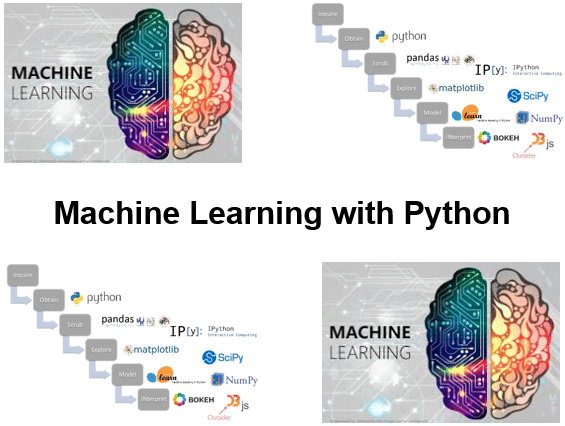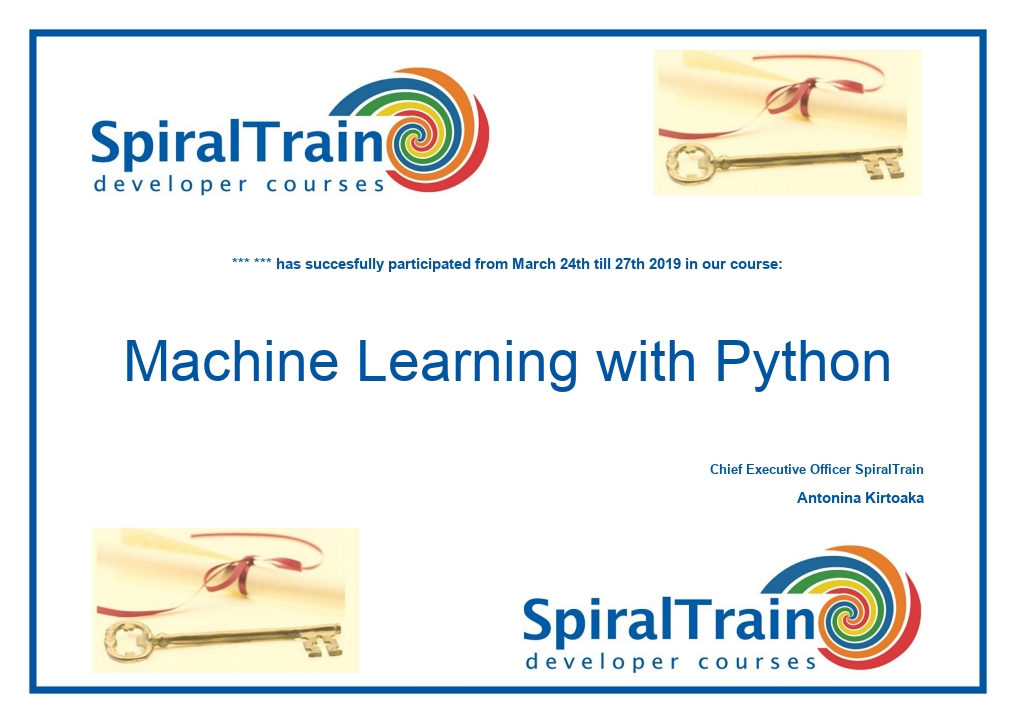-
Learning by doing
-
Trainers with practical experience
-
Classroom training
-
Detailed course material
-
Clear content description
-
Tailormade content possible
-
Training that proceeds
-
Small groups
In the course Machine Learning with Python participants learn how to implement machine learning algorithms using Python and the Scikit-learn library. Scikit-learn is largely written in Python and makes extensive use of Numpy for high-performance linear algebra and array operations.
The Machine Learning with Python course starts with an overview of the basic concepts of Machine Learning in which models are made on the basis of supplied data. The difference is explained between Supervised and Unsupervised Learning.
Subsequently the libraries that form the foundation behind Machine Learning with Scikit-learn such as Numpy, Pandas, MatPlotLib and Seaborn are discussed. In the basic architecture of Scikit-learn, the data is split into a feature matrix and a target array. Also treated is how a model is trained with a training set and then compared to a test set with the Estimator API.
The course Machine Learning with Python also includes Feature Engineering. This discusses how to deal with categorical features, text features, image features and derived features. And the use of features pipelines is also explained.
After a treatment of the Naive Bayes theorem with Naive Bayes classifiers and the models based on them, Linear and Logistic regression are discussed. Specialist versions such as Polynomial Regression, Ridge Regression and Lasso Regularization are also covered.
Then the course Machine Learning with Python pays attention to different variants of Machine Learning algorithms that are based on classification. Support Vector Machines and Decision Trees are discussed here.
Finally the course Machine Learning with Python deals with Principal Component Analysis as an example of an unsupervised learning algorithm. Dimensionality Reduction is then treated as well.
The course Machine Learning with Python is intended for data analysts who want to use Python and the Python libraries in Data Analysis projects.
To participate in this course knowledge of and experience with any programming language or package such as SPSS, Matlab or VBA is desirable. The course starts with a discussion of the principles of the Python programming language.
The theory is discussed on the basis of presentation slides. Illustrative demos clarify the concepts. The theory is interchanged with exercises. The Anaconda distribution with Jupyter notebooks is used as a development environment. Course times are from 9:30 to 16:30.
After successful completion of the course, participants receive an official Machine Learning certificate with Python.

Module 1 : Intro Machine Learning |
Module 2 : Numpy and Pandas |
Module 3 : Scikit-learn Library |
|
What is Machine Learning? Building Models of Data Model Based Learning Tunable Parameters Supervised Learning Labeling Data Discrete Labels Continuous Labels Classification and Regression Unsupervised Learning Data Speaks for Itself Clustering and Dimensionality Reduction |
Numpy Arrays NumPy Data Types Pandas Data Frames Inspect Data Operations on Data Missing Data Pandas Series Pandas Indexes Time Series MatplotLib Plotting with Pandas Seaborn Library |
Data Representation Estimator API Features Matrix Target Array Seaborn Visualization Model Classes Choosing Hyperparameters Model Validation Fit and Predict Method Label Predicting Training and Testing Set Transform Method |
Module 4 : Feature Engineering |
Module 5 : Naive Bayes |
Module 6 : Linear Regression |
|
Categorical Features Vectorization Text and Image Features Derived Features Adding Columns Handling Missing Data Imputation of Missing Data Feature Pipelines Polynomial Basis Functions Gaussian Basis Functions Regularization |
Naive Bayes Classifiers Applicability High Dimensional Datasets Bayes’s Theorem Generative Models Gaussian Naive Bayes Probabilistic Classification predict_proba Method Multinomial Naive Bayes Confusion Matrix When to Use Naive Bayes |
Slope and Intercept LinearRegression Estimator coef_ and intercept_ Parameter Multidimensional Linear Models Basis Function Regression Polynomial Regression PolynomialFeatures Transformer Gaussian Basis Functions Overfitting Ridge Regression Lasso Regularization |
Module 7 : Support Vector Machines |
Module 8 : Decision Trees |
Module 9 : Principal Components |
|
Discriminative Classification Maximizing the Margin Linear Kernel C Parameter Support Vectors SVM Visualization Kernel SVM Radial Basis Function Kernel Transformation Kernel Trick Softening Margins |
Ensemble Learner Creating Decision Trees DecisionTree Classifier Overfitting Decision Trees Ensembles of Estimator Random Forests Parallel Estimators Bagging Classifier Random Forest Regression RandomForest Regressor Non Parametric Model |
PCA Unsupervised Learning Learn about Relationships Principal Axes Demonstration Data Affine Transformation Components Explained Variance Dimensionality Reduction Inverse Transformation Explained Variance Ratio PCA as Noise Filtering |
